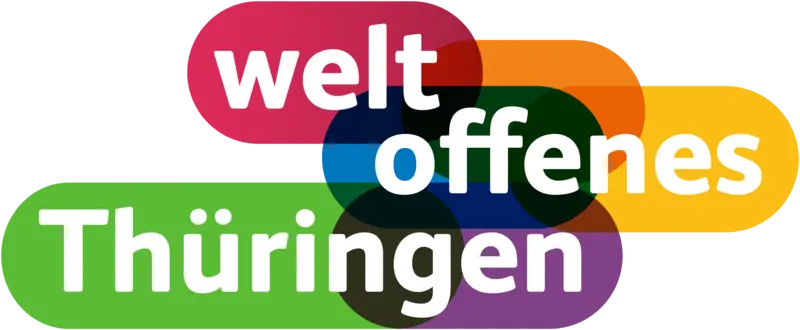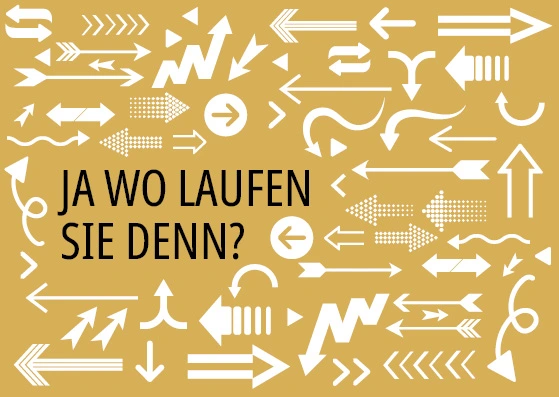Every year in October at the latest, when the new students arrive on campus, there are perplexed faces. Where can I find my faculty, where is the lecture hall and where is the cafeteria? Is that supposed to end now, Mr Sauerbrey?
Well, it's certainly not quite as "bad" as you're describing. But yes, our current signage system is clearly getting on in years and has many weak points. For example, the signage is inadequate in some places and is neither uniform nor logical in its structure. In addition, the system is not barrier-free, i.e. it has no tactile information, and it is not bilingual. This means that it is not only difficult for new students and employees to find their way around the campus, but suppliers also often have difficulty finding the right contact due to the large number of buildings that all operate under the address Nordhäuser Straße 63. With the new guidance system, we want to eliminate all these deficits and position ourselves well for the future.
What does that mean in concrete terms - new addresses, new building names, new look, new functionalities?
Yes, basically exactly the same. At the moment, all the buildings operate under the address Nordhäuser Strasse 63, which doesn't always make it easy - for suppliers, for example - to find the specific building. There are actually more detailed postal addresses, but hardly anyone has used them in the past (or even knows them). For example, very few people know that the street between the university library and the sports hall is called Mathes-Maler-Straße. Alfred-Weber-Platz, Saalestraße, Alfred-Weber-Allee have at least been heard of by many. In future, all buildings will also be assigned an exact postal address. in addition, they will be numbered consecutively - counterclockwise - preceded by a "C", which stands for "Campus". We decided on the latter to make it easier to understand - even in other languages. Hardly anyone outside the campus knows what LG stands for, let alone that it would work in the English translation. The buildings outside the campus will be labelled according to the street name and house number (e.g. N84 for the Willy Brandt School, P19 for Puschkinstraße, CG1 - CG6 for the Gotha Campus, etc.) In doing so, we will of course retain proper names that are already established, in addition to the orientation number. The Max Kade House will thus remain the Max Kade House and, according to the above scheme, would additionally receive the orientation number C09. The library will remain the library with the orientation number C16. The same applies to the Brandt School, the KIZ, the cafeteria and Villa Martin.
When does it start?
We are already in the middle of it. We are currently working out the entire system with our agency. By the end of 2022, we should have a handbook that we can use to implement the project. However, the roll-out to the buildings on campus and the external locations will not be possible for all of them at the same time, as that is a larger item. We will have to tackle this successively.
And when will everything be ready?
I can't answer that at the moment and it depends on future budgets, among other things. At least as soon as possible. In part, we also want to integrate the new signage for the buildings inside into the upcoming or ongoing construction measures, because funds for signage are already priced into these. For example, the new research building, which would then be signposted in 2023, as well as the sports hall. And for the Audimax building, we would probably have to wait until 2024.
Why does it take so long?
All that really needs to be done is to replace the signs... It would be nice. The establishment of such a new guidance and orientation system is much more complex than it might seem at first glance. After all, it's not done with new signs...
But?
The changes affect many areas and aspects: In addition to the signage (from the main entrance to the campus to important crossroads into the buildings to the office door), there will be changes on our websites (contact/directions // digital business cards // texts // calendar of events) and other web applications such as E.L.V.I.S., room allocation and course catalogue. Also affected are the asset accounting or inventory, including the location of the Technology (for Secondary Schools), comparison of the room designations with the database in the key management, site plans for the police and fire brigade, adaptation of the staff directory, printed matter such as forms, business cards, letterheads, flyers and possibly also stamps. All this has to be considered in advance so that the new system can be a success.
And who is working on the whole thing?
The project manager is in our Department 4: Facility Management. But for the development phase we have formed a working group of representatives from different areas of the university to support us: Head of Administration, Administration, University Computer and Media Center (URMZ), Faculties, Research institutions, Students, Representative body for severely disabled persons, Equal Opportunity Officer, Staff Council an the Student Services Organisation. It was very important to us that we "involve" the areas from the beginning so that the project is a success. We benefit greatly from the exchange with each other and also from the different perspectives. The colleagues see in everyday life where there are problems and what information is needed where. This is an enormous input for us - because we in building management know our way around the campus very well. That quickly leads to a certain operational blindness. And of course the acceptance of changes like this is higher when many people have been involved in the process and have been able to contribute. But of course we also get professionals on board: our project partner is Form & Fokus from Leipzig, which already has extensive experience in the field of guidance and orientation systems and has implemented numerous projects - also at universities.
But there is also a lot of work to be done by the employees, when everything from the door sign to the electronic business card has to be changed...
We try to keep this work as small as possible and organise everything centrally. Of course, no one on campus is plagued by boredom. For example, the Computer Centre and University Communications are currently checking whether the updating of the relevant information on the electronic business cards and in the calendar of events can be done centrally via the University Computer and Media Center (URMZ). The changes on the central websites will be taken care of by University Communications (e.g. contact/approach page). But yes, without the help of the decentralised areas, it's not quite possible. For example, any updates that may be necessary on the decentralised websites must be carried out by the respective editors responsible. And the updating of personal email signatures must also be done by the users themselves, since only they have access to them. University Communications will create corresponding templates for the door signs, which will be printed out and inserted. The initial fitting will then be done by the building management team. For possible later updates, the templates for the individual areas are to be made available on the intranet. The letter templates will be updated centrally by University Communications and made available on the intranet. University Communications also takes care of updating the various (thematic) campus maps, exchanges them on the website and made them available to members of the university on request. But I also don't want to hide the fact that the departments and the computer centre have work to do in the areas of inventory, room plans and asset accounting. We have therefore held talks with the respective heads of department at an early stage so that they can schedule the work accordingly. But I can already say that the effort will be worth it. Because with the new guidance and orientation system, we are not only visually "up to date", but also optimally positioned for the future in our daily work.
...so you're also on the move digitally, e.g. with a campus app?
That is not yet planned as a first step, because that would be a considerable investment. But our system can be expanded at any time. We have already paid attention to this in advance. What seems more important to us at the moment is that the new signage system is bilingual (German/English) and, in terms of barrier-free design, that we implement important requirements from barrier-free construction and, in particular, integrate tactile information (Braille and pyramid writing).
Now, such a new guidance and orientation system also costs a lot of money. In view of the cost-cutting measures announced at the University of Erfurt - keyword: global underspending - one might ask: What is more important - a guidance system or staff positions for research and teaching?
That is correct, but the tasks do not compete in this case. For the development of the new guidance and orientation system as well as the first implementation step, we have been provided with a total of 200,000 euros from the Higher Education Pact funds earmarked by the state until the end of 2022 as part of its "Inclusive Universities" programme. This means that the university is not spending any money here that could otherwise be available for jobs or teaching and research.
Last question: How can I find out about the progress of the project or where can I ask questions?
We have compiled all the important information on a website. For example, there's a list of the new building names, so you can get some information in advance. There is also an FAQ section, which is constantly being expanded, as well as news about the guidance and orientation system and contacts. The site can be found at: www.uni-erfurt.de/universitaet/aktuelles/meilensteine/leitsystem and is updated regularly. And of course, Department 4: Facility Management is also available to answer questions.


